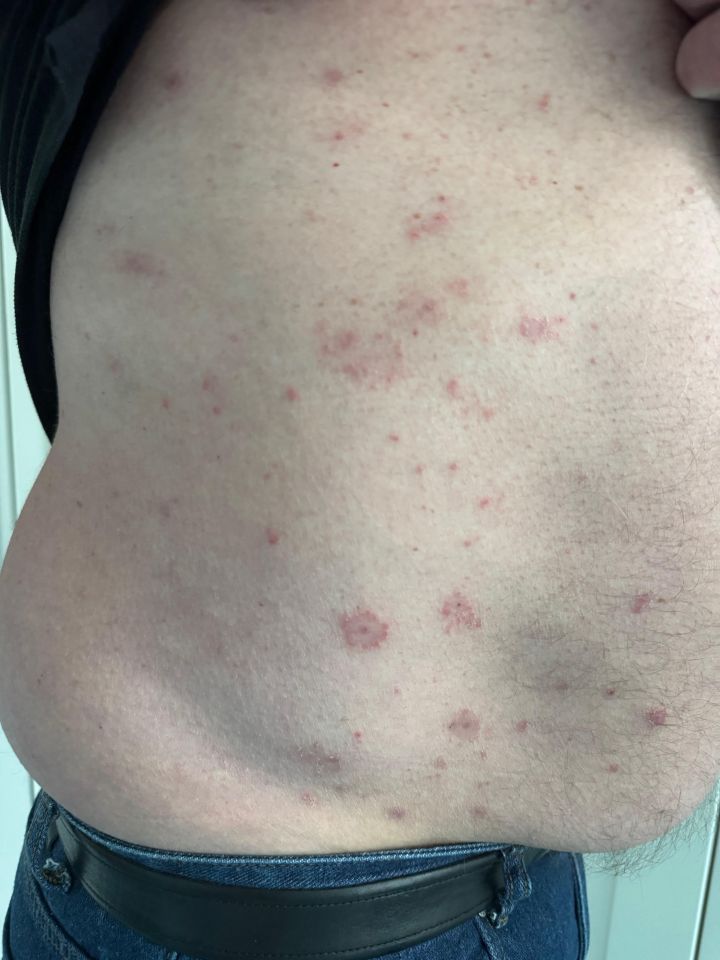SPRING is here and while many of us are jumping for joy, it is also the time of year when lots of people come down with a bug.
It is no myth that spring can see an uptick in viruses and infections.
The change in temperature can weaken the immune system, as can a lack of vitamin D over the darker, winter months, making people more susceptible to illnesses.
And when the weather gets warmer, we are more inclined to socialise than at the start of the year – and more contacts means more chances of catching something.
Staycations and trips abroad during half-term and Easter holidays may also expose us to germs.
Heading outdoors can also trigger seasonal allergies – with 25 per cent of hayfever sufferers allergic to tree pollen, which may cause sniffles, itchy eyes and more.
Meanwhile, the clocks went forward last weekend and studies show that a shift in daylight hours can put stress on the body.
So you are not imagining it – you may not feel so sprightly at the start of the season.
Bear in mind that bookings are now open for Covid booster vaccines.
Data shows that people who got the jab last year were 40 per cent less likely to be admitted to hospital with the virus for two months after.
Here is a selection of what readers have asked me this week . . .
STOMACH PAIN AND TOILET TROUBLE
Q) ABOUT an hour after eating food I get a pain in my stomach and need to head for the toilet. It can mean a few visits.
I tried getting a doctors’ appointment but the receptionist said it could take weeks.
I have lost money because I’m too scared to travel in case I have an accident.
If I have to, I take diarrhoea tablets and don’t eat. What would you recommend?
A) If this has been a short-lived problem – less than a fortnight – then the most likely cause would be viral gastroenteritis, a virus that causes infection of the intestines.
It can result in symptoms like cramps, watery diarrhoea, nausea and sometimes vomiting or fever.
It gets better on its own in most people, though some people find it can take a few weeks for bowel habits to fully return to normal.
If it has been going on for longer, it definitely needs to be explored further.
There are many potential causes ranging from emotional stress to autoimmune disease (including coeliac, Crohn’s and colitis) to food allergies and intolerance.
It is also important to rule out bowel cancer if a change in bowel habit has persisted for longer than four weeks with no obvious cause.
It might be helpful to explain to reception the severity of your symptoms or complete an e-consult online.
E-consults are usually triaged by a trained member of the reception team according to your symptoms.
An altered bowel habit of over four weeks should trigger a reasonably urgent GP review.
For anyone reading – it is really easy to do the FIT test, which is sent to your home as part of the NHS bowel cancer screening programme.
It just requires a small sample of your poo that you collect at home.
The test is sent to everyone aged 54 to 74, but this will soon cover everyone from the age of 50.
The test identifies small traces of blood in the stool that you cannot see with the naked eye.
What caused the shadow on my lung?

Q) IN July I had a severe pain down my right breast and round into my back which took my breath away.
Assessments at the hospital found a shadow on my lung.
It was hoped that it was an infection but despite two courses of antibiotics there was no change.
A further CT scan, PET scan and another CT have been taken and all I have been told is they are unsure what it is.
A recent letter on my latest scan said it is shrinking but hasn’t resolved and another CT scan will take place in six months.
If it keeps shrinking will I ever know what caused it? I have never smoked.
A) The term “shadow” on the lung actually means an area that appears more dense on an X-ray or CT scan than normal lung tissue.
Causes include infections, inflammation, benign nodules and cancerous tumours.
Of course, the focus for your doctors is to hopefully rule out cancer, and the fact that it is shrinking is a reassuring sign.
A normal PET scan is also reassuring as this is a test that can help detect cancer throughout the body.
The hope will be that the shadow continues to shrink and eventually disappears.
Sometimes people have benign “lung nodules” which can persist, but not grow and there are guidelines in place to monitor these depending on how they do or don’t change over time.
To answer your question about whether you will ever know the precise reason for the shadow on your lung – there is a likely chance that you might never know exactly what the cause was if it keeps shrinking.
The only way to determine for certain would be to do a biopsy, which means removing some of the denser tissue from the lung to analyse it under the microscope, but this would only be advised if the benefit of knowing would outweigh the risks of the procedure.
My husband’s in spots of bother
Q) MY husband has suffered a skin condition for a month.
It seems to be improving but that’s only because it’s not itching now.
The size of the spots seem to be getting larger. Can you please help?
A) When it comes to rashes it’s often the case that there are clues in the history to help make a diagnosis.
There is a common skin condition called pityriasis rosea that can cause scaly oval-shaped patches on the skin or the chest, abdomen and back.
They tend to appear pink or red on white skin and grey, or darker brown/black on brown or black skin.
A major clue is the “herald patch”, which is the first patch to appear, and it tends to remain the largest patch.
Around one or two weeks later, the rest of the rash appears gradually over about ten days.
Another clue is that most people have some mild flu-like symptoms before the rash appears.
It can be very itchy, but isn’t always, and the good news is that it gets better without any specific treatment over about six weeks.
It could also be erythema multiforme, which has what we describe as “target lesions” on the skin because they look like a dart board bull’s-eye.
Not all of these skin lesions have this appearance but some do.
Clues that would point towards this would be if you had an infection, such as herpes simplex (which causes cold sores) or pneumonia, or it can be a reaction to some vaccines, or medicines, especially anti-inflammatory drugs (like ibuprofen), antibiotics or statins.
This usually gets better on its own after two to four weeks.
The final cause to mention is autoimmune diseases such as skin lupus.
Which of the above fits best with the history of his rash?
If in doubt, see your GP in case further tests, such as those for lupus, are required.
It’s a deadly cocktail
SMOKING and boozing can more than double the risk of head and neck cancer, a groundbreaking new study has revealed.
Around 70 per cent of cases are linked to smoking, making it the biggest preventable cause.
Alcohol alone is responsible for some four per cent of cases.
But when smoking is combined with alcohol, the damage done to a person’s DNA by booze is amplified by up to 2.5 times.
Dr David Scott from Cancer Research UK said: “These findings represent a significant advance in our understanding of how everyday exposures like smoking and drinking contribute to cancer development.”
The study, published in Nature Genetics, reveals “molecular scars” left on DNA by tobacco smoke.
Researchers analysed tumour samples from 265 head and neck cancer patients across eight countries, finding six distinct patterns of tobacco-related DNA damage – several of which were previously unknown.
Ultraviolet light is a known risk factor for lip cancer but the study found it may also play a role in cancer of the internal lining of the mouth.
Smoking intensified the DNA damage combined with UV rays.
Head and neck cancer affects areas such as the mouth, throat, and voice box, with 12,800 new cases diagnosed in the UK each year.
Pill link to baby blue
NEW mums could be at risk of postpartum depression if they go back on the Pill, a study claims.
Danish researchers analysed 610,000 first-time mums and revealed that those who started using hormonal contraceptives within a year of giving birth were 49 per cent more likely to develop depression compared to those who didn’t.
The risk was highest for women using the combined Pill.
And the experts said the earlier these pills were taken after childbirth, the greater the likelihood of depression.
Forty per cent of the mums went onto hormonal contraceptives after their birth, which includes the Pill, the implant, the hormonal coil (IUD) and injections (such as Depo-Provera).
The researchers, led by Dr Søren Vinther Larsen at the Copenhagen University Hospital, said: “The early postpartum period appears to be a window of heightened susceptibility.
“This raises the question of whether routine contraceptive prescriptions could be unintentionally increasing depression rates in new mums.”
The findings, published in the journal Jama Network Open, suggested even women with no history of mental health problems were at risk.
Postpartum depression is thought to affect one in ten women.
The condition should be considered if “baby blues” persist more than two weeks after the birth.


